
First and Only Weekly Webzine Devoted to the Life and Works of Edgar Rice Burroughs Since 1996 ~ Over 15,000 Webpages in Archive Issue 0618 |

First and Only Weekly Webzine Devoted to the Life and Works of Edgar Rice Burroughs Since 1996 ~ Over 15,000 Webpages in Archive Issue 0618 |
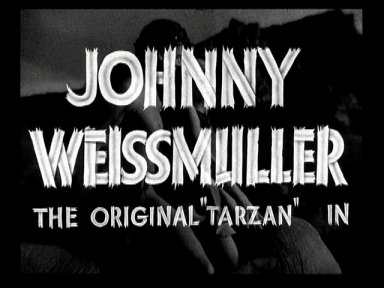
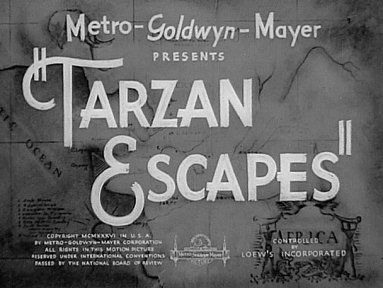
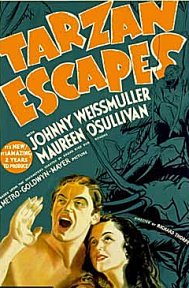 |
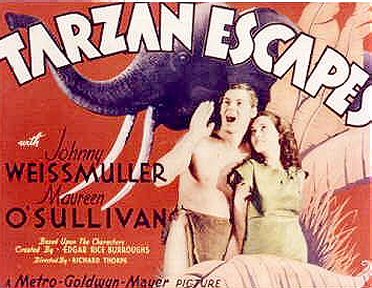 |
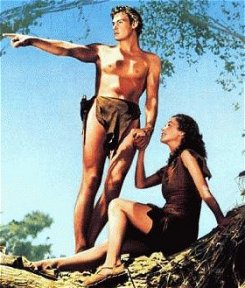 |
The original version of this film, titled The Capture of Tarzan, was shown to preview audiences in 1935 and was heavily criticized for scenes of gruesome violence. The most notorious scene was one involving a giant bat attack in a swamp. Hollywood legend has it that, at the preview showing, the sight of these giant creatures carrying off panic-stricken porters sent kids screaming from the theatre. So strong was the negative reaction from parents, critics and media, that the studio ordered much of the film re-shot. MGM replaced the original director, James McKay, with a series of directors with the final credit given to Richard Thorpe. /
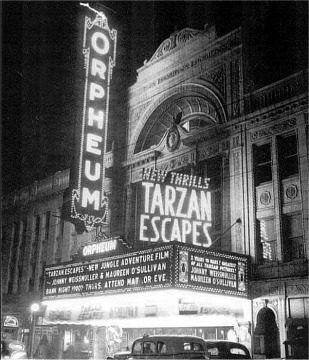
SENSATIONAL REACTION TO THE FILM
The alternate version had various working titles including: Tarzan Returns, Tarzan and the Vampires, and Tarzan The original scenes were replaced, however, by equally gruesome scenes, such as the Gabonis shooting arrows into the heads of fleeing porters, victims tied spread-eagle on bent trees being split in half when the trees were freed, Ganeloni torture rites, and the lowering of captives into a pit to be slaughtered by a man-killing giant ape. A copy of the first version has never turned up but the story line was used in the Big Little Book version (ERBzine 0648).
| Directed by Richard Thorpe ~ John Farrow
(uncredited)~
James C. McKay (uncredited) ~ George B. Seitz (uncredited) ~ William A. Wellman (uncredited) Associate Producer: Sam Zimbalist Writing credits: Edgar Rice Burroughs (characters) ~ Cyril Hume Runtime: 90 min CAST
|
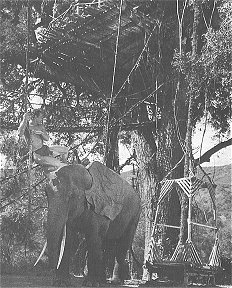 |
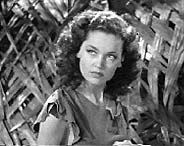 |
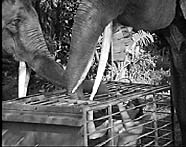 |
 |
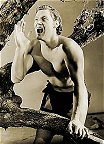 |
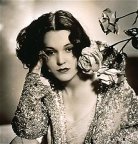 |
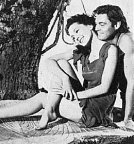 |
TRIVIA BITS: |
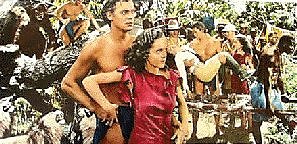 |
 |
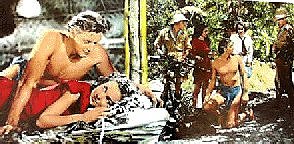 |
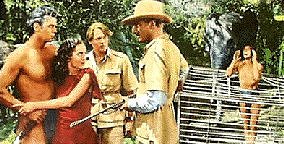 |
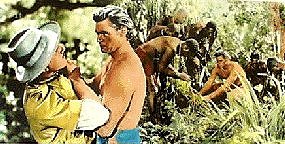 |
 |
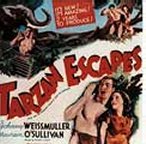
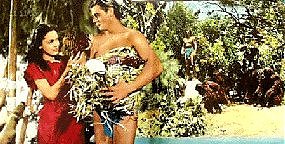
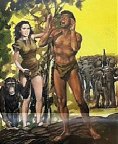
|
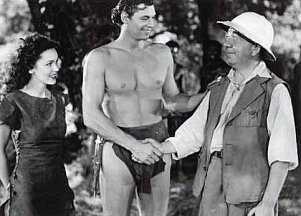 |
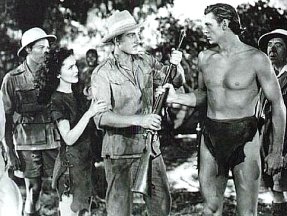 |
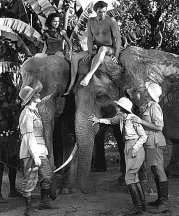 |
|
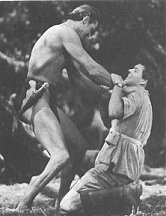
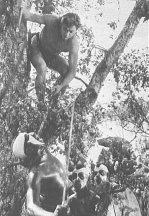
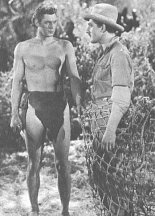
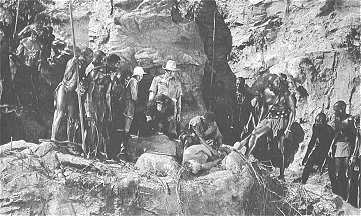
![]()
|
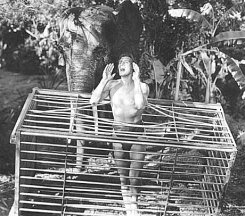 |
 |
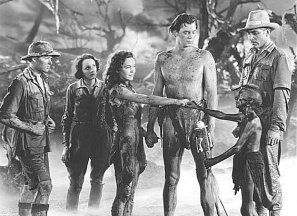 |
Benita Hume: Born October 14, 1906 in London, England ~ Died: November 1, 1967 in Egerton, England. She started in the theatre but quickly gravitated to films. She married writer/journalist Eric Siepman at age 19. She won a role in Ivor Novello’s play Symphony in Two Flats and she accompanied Novello when he took the play to New York. From here she graduated to a number of contracdts with RKO and MGM. In 1935 she was cast by MGM in Tarzan Escapes for $1250 per week, for a minimum of three weeks, but by the time the film was completed her wages from the film totalled $75 000. She married Ronald Colman in 1938 and they had their only child, Juliet, in 1943. The Colmans did several radio shows with neighbour Jack Benny and starred in their own series, Halls of Ivy in 1950, which evolved into a TV series in 1954. She returned to England after Ronald died in 1958 and married George Sanders a year later. She died of bone cancer in 1967.
William Albert Henry: Born: November 10, 1918 in Los Angeles, California Died: August 10, 1982 in Los Angeles, California. Duke Kahanamoku, the Hawaiian swimming sensation and Weissmuller rival in the 1924 Olympics, became Henry’s adopted brother, when the legendary swimmer and surfer needed a sponsor for his first professional outing on the mainland. And it was through Kahanamoku that Henry got his first film role, in the 1925 film, Lord Jim. In 1934 he played Maureen O’Sullivan’s brother, Gilbert in The Thin Man. He married actress Grace Durkin in 1936 and they had a son, Michael. Grace’s sister would later marry actor James Ellison who played many movie roles including Hopalong Cassidy’s sidekick. Henry worked in films and TV into the mid-'60s, often playing villains. He worked again with Weissmuller in two more films: Fury of the Congo and Jungle Moon Men.
John Henry Clanfergael Buckler was born April 1, 1906 in Capetown, South Africa. He began making films in America in 1934 and was killed in 1936 in a car accident, shortly after completing his sixth film, Tarzan Escapes.
Herbert Mundin: Born: August 21,1898 in St. Helens, Lancashire, England ~ Died: March 5, 1939 in Van Nuys, California, His comic character was added to the second version of Tarzan Escapes to tone down the violence in the film. “Miss Jane, `e’s the finest gentleman I've ever `ad the privilege of knowin'... trousers or no trousers!” Mundin began his theatrical career following the First World War on the British Music Hall circuit and he, later moved to Broadway. He entered films via the Fox studios in 1931 where he usually provided comic relief in films such as Charlie Chan’s Secret in 1936. Memorable roles included David Copperfield (1934) and The Adventures of Robin Hood (1938). His last film was Society Lawyer for MGM. He was killed in a car accident at the age of 40. 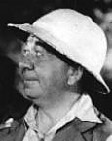
Darby Jones: Born: February 21, 1910 in Los Angeles, California ~ Died: November 30, 1986 in Los Angeles, California. He appeared as Fry’s native boy, Bomba and he played similar parts in a number of films right up into the early fifties: Tarzan, the Fearless (1933) with Buster Crabbe, Stanley and Livingstone (1939), Congo Maisie (1940), White Cargo (1942), the Columbia serial Congo Bill (1948), Zamba (1949), Tarzan’s Savage Fury (1952) with Lex Barker, and White Goddess (53) with Jon Hall as Ramar of the Jungle.
JOHNNY ECK Johnny Eck: Born John Echkardt, on August 27, 1911 in Baltimore, Maryland and died January 5, 1991 in Baltimore, Maryland. Johnny Eck was born without lower extremities twenty minutes after the birth of his normal identical twin brother Robert. The two-pound newborn had almost nothing below his rib cage. The boys entered the sideshow circuit at the age of 12, where John was billed as "Johnny Eck, The Half-boy." He performed in Ripley's first Believe it or Not Odditorium at the 1933 Chicago World's Fair; billed as "The Most Remarkable Man Alive!" He and brother Robert travelled the country with magician Raja Raboid's "Miracles of 1937" show, in which they were part of the sawing-in-half illusion. The act involved Rob being called out of the audience as a volunteer for a magician's trick, and climbing into the box, but it was legless Johnny who emerged from it. A midget acting as Johnny's legs would then run off stage chased by Johnny. The effect shocked the audience so much that the act was eventually shut down. Johnny went on to play a role in Tod Browning's "Freaks" and provided comedy relief in three Weissmuller Tarzan movies. For the Tarzan movie roles he wore a weird bird suit and played a "gooney-bird" creature running through the jungle. He was also a talented screen painter, writer and pianist who conducted his own orchestra. Johnny was said to have a genius IQ. The little golden green outfit he wore in his circus act was prominently on display on display at Forry Ackerman's Ackermansion in Los Angeles. Johnny Eck retired from public life in the 1980s after his home was robbed, and he died in the house where he was born on January 5, 1991 at the age of 79. A film starring Leonardo DiCaprio as both v brothers is in the planning stages."If I want to see freaks, I can just look out the window." -Johnny Eck Filmography: 1.Tarzan's Secret Treasure (1941) (uncredited Bird) ~ 2.Tarzan Escapes! (1936) (uncredited Gooney-Bird) ~ 3. Tarzan the Ape Man (1932) (uncredited Bird creature) ~ 4.Freaks (1932) - Half Boy.
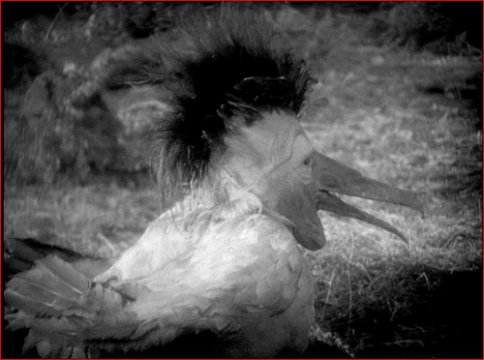
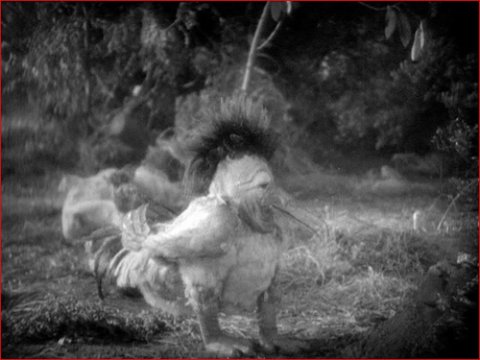
In almost every one of the Johnny Weissmuller Tarzan films, there's a trek up the treacherous cliffs that leads to the escarpment where Tarzan and Jane are developing a mini suburban home in the jungle, complete with homemade domestic gadgets and a fully equipped kitchen. Quite often, they use library footage, or second-unit sequences to show the local wildlife. There's a lot of recycling in these films, with action scenes and shots of Tarzan swinging through the trees (performed by a trapeze artist in some cases) appearing repeatedly. So, it's always a pleasant surprise when they throw in something novel.
En route to the escarpment this time around, the group that is ostensibly seeking Jane's signature on a family fortune is actually going to try and entice her back to England, while Captain Fry (John Buckler, who died in a road accident a week before the film's release) aims to capture Tarzan, presumably to stick him in a sideshow. Thus is efficiently established Tarzan and Jane's ongoing see-saw dialectic between civilisation and … er, whatever the jungle is supposed to represent by the time they've built all the household appliances out of bamboo. On the trek, Fry's cowardly and ineffectual assistant Rawlins (a career playing butler clearly beckoned for Herbert Mundin) checks out the local animals, growing increasingly uneasy at the sight of big cats and crocodiles. The final straw, though, the one that makes him question his sanity, is the appearance of a large, thick-legged bird. Click on the slideshow to view
Notice anything odd about it? Like Rawlins, I did a double-take. I’m no naturalist (that's animals, not clotheslessness), but I think I recognise a wide variety of species from this crazy planet of ours. But yes, the bird is actually a bloke in a costume. Not just any bloke -- that's Johnny Eck, "half-man" sensational star of Freaks (1932).
Having looked up this moment, I was surprised to find that it was itself used in the first Weissmuller Tarzan film, Tarzan the Ape Man (1932). Had I not noticed it? Why did they choose to slip in this surreal moment, dressing up a human actor for one of the animals? They occasionally use actors in ape suits for complex bits of monkey business, but the "scenic" shots of wildlife are mostly shot on location using real animals. Only when they need something to attack or be ridden by a human do they cut to trained animal actors.
I suspect the answer is that they did it because they could. The footage was shot during the making of Freaks, another MGM production, that would eventually be released a month before Tarzan the Ape Man, and might even be making sly reference to the bird creature into which Olga Baclanova is transformed at the end of Browning's Freaks film. It's tempting to read into it a subtext about capture and escape, the threat of Tarzan being turned into a sideshow exhibit, but it was probably just an opportunist in-joke.
Eck sounds like a pretty amazing guy, exploiting the prominence offered by his extraordinary physique to pursue his eclectic interests in arts and entertainment; he was a painter, pianist, diarist, magician, actor and, best of all, a Punch and Judy man. Tom Waits namechecks him on the Black Rider album, and loosely based the song Table-top Joe on his life. Find out more about him at the great Johnny Eck Museum.
After Freaks, Eck was featured as a bird creature or "Gooney Bird" in three Tarzan movies: Tarzan the Ape Man (1932), Tarzan Escapes (1936) and Tarzan's Secret Treasure (1941). In order to create the bird costume used by Eck for the Tarzan films, footage which was filmed during the production of Freaks in 1931, a full body cast was taken of him.
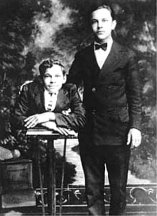
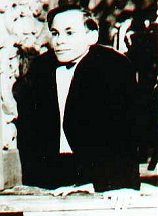
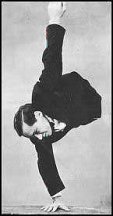
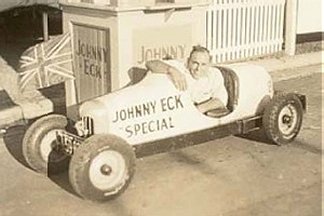

Click
for full-size Splash Bar HERE
See ERBzine Silver Screen for
more on Johnny Eck
Tarzan
the Ape Man
Tarzan's
Secret Treasure

. |
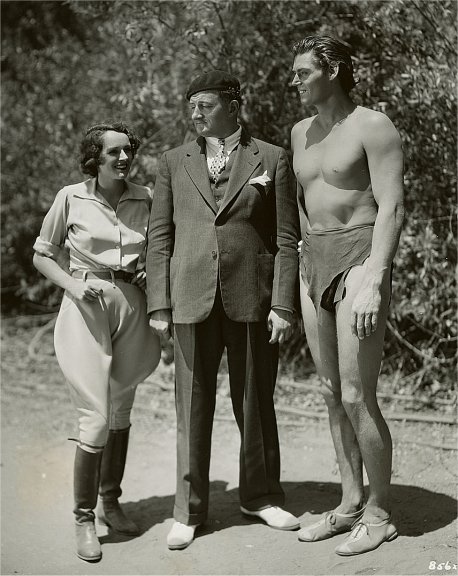

October 27, 1936 ~ NOTE: This is not Elmo as indicated on the back of the publicity still Benita Hume ~ Cyril Hume (screenwriter) and Johnny Weissmuller On the set of Tarzan Escapes |
Click for full-size Promo Splash Bars
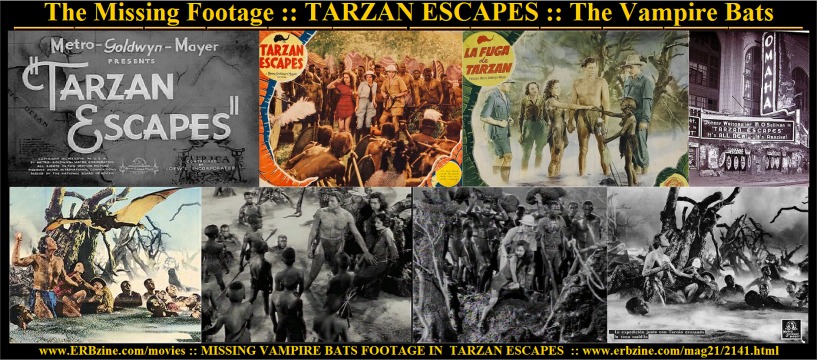
![]()
INTERESTING SITES ON THE WEB
I
Saw the Giant Vampire Bats! by Ron Hall
Green Briar
Picture Shows
ERBzine
Silver Screen Movie Illustrated Reference Guide
Internet Movie Data Base
Tarzan
of the Movies
The German-Hollywood
Connection
Filmsite Moments and
Scenes from Great Movies
shill pages
Matt's Tarzan Movie Guide
The German-Hollywood
Connection
ERB
of the Silver Screen - Volume I - The Silent Years by Jerry Schneider
Jerry Schneider's Movie Making
Locations
http://www.mergetel.com/~geostan/mermaids.html
Geoff St. Andrews'
Johnny Weissmuller Site
Johnny
Eck Reference in Forrest J.Ackerman Interview
Music in the
Tarzan Films
Music Cues
in Tarzan Films
RKO Films
My Mother's
Tarzan
Weissmuller
Bio
Tarzan
Locations
Tarzan
in Acapulco
|
The Ape Man |
And His Mate |
Escapes |
Finds A Son! |
Secret Treasure |
New York Adventure |
| . |
Triumphs |
Desert Mystery |
and the Amazons |
Leopard Woman |
. |
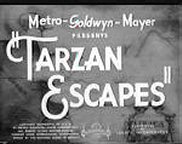
Introduction |
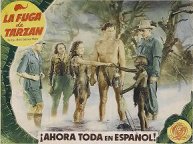
Vampire Bats: Missing Footage |
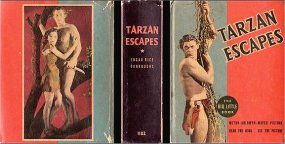
Summary Adaptation of Original Script |
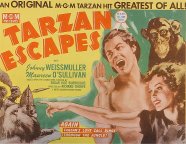
Lobby Cards, Posters, Stills |
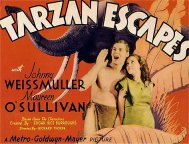
Lobby Display II |
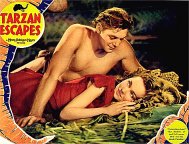
Lobby Display III |
From

The
Fantastic Worlds of Edgar Rice Burroughs
ERB
Companion Sites Created by Bill Hillman
![]()
![]()

![]()
Volume
0618

BILL
HILLMAN
Visit
our thousands of other sites at:
BILL
and SUE-ON HILLMAN ECLECTIC STUDIO
ERB
Text, ERB Images and Tarzan® are ©Edgar Rice Burroughs, Inc.-
All Rights Reserved.
All
Original Work ©1996-2010/2022 by Bill Hillman and/or Contributing
Authors/Owners
No
part of this web site may be reproduced without permission from the respective
owners.